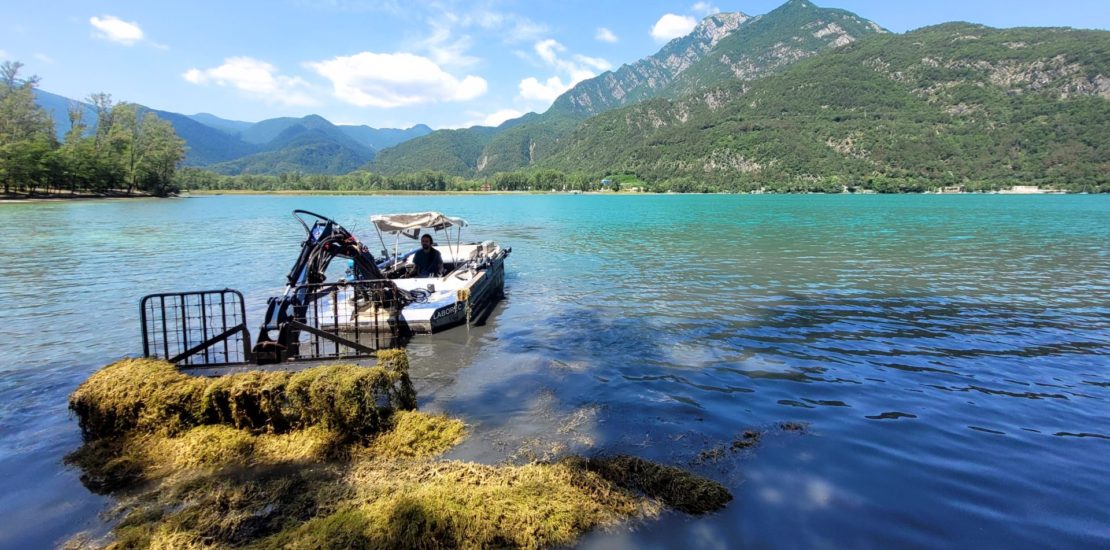Mowing of aquatic vegetation
- 15. December 2022
- Posted by: matej.beres
- Categories: Articles, News

Vegetation in the vicinity of water bodies affects light conditions by shading, reduces the supply of soil particles to the water environment by wind action, protects banks and drains nutrients.
In the case of water bodies with no or minimal water flow, they are an excellent habitat for reed vegetation. The development of reed vegetation on the water surface is mainly conditioned by the height of the water column. The available substrate and the speed of the water flow. The presence of algae in the water surface is mainly supported by the supply of nutrients from the external environment, incident light and water temperature. If the water is eutrophic, a water flower – cyanobacteria – usually appears on the water surface.
A very common situation of excessive growth of aquatic vegetation occurs near intensively farmed land, especially in or around cornfields and intensively fertilized lawns. Substances that are distributed for the purpose of fertilizing the soil are directly floated into the lake during rainfall, or they reach the subsurface water, from where they subsequently (also through a well) reach the lake.
In the event that an excessive amount of nutrients does not reach the lake, mowing it with subsequent collection from the water environment may be sufficient for the long-term removal of unwanted vegetation. Such special maintenance of the water surface can be carried out once or occasionally at longer intervals. If, however, a constant supply of nutrients is “secured” in the lake in combination with light and shallow water, it is necessary to plan regular mowing and harvesting.

